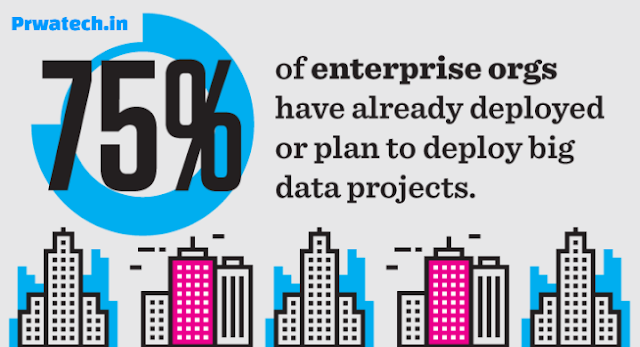Top 7 ideas for collecting and using your business data
Data science is a burgeoning area in which organizations are contributing to help make better decisions to enhance their profitability and handle customer data all the more productively. However, how you gather and analyze your data is of fundamental importance to your business as a hadoop developer. Here are the top 7 tips for how to gather and utilize your business data:
This may sound basic, yet you have to set out a key question you want to answer with your big data. This will allow you to conduct concentrated analysis later on without making things too perplexing. You may waste time and money gathering variables which have almost no utilization to answering your question.
2. Characterize your variables
Once you have decided your question, you have to characterize what variables you have to gather. This is important as your data collection can be tailored towards gathering these variables. If you put a large amount of money into gathering X and Y, and later discover Z is also important to you, this mistake can be exorbitant.
3. Quantitative is better than qualitative
Quantitative is numerical data and qualitative is opinions, motivations and so forth. You ought to ask, on a scale of 1 to 10 what is your opinion on this item. However, quantitative data is still exceptionally valuable, yet you have to check whether this data can help you with tip 1.
4. Plan how you will record data
Before any tests I conduct, I always manufacture an unfilled spreadsheet and consider segment headings and how my data will look. This makes things a considerable measure easier when you come to analyze your data as your outcomes are not spread across 25 worksheets!
5. Try not to depend on averages.
Averages have their place, yet they are also great at concealing information. You have two items on the market that you might want to know the sales figures for, for the entire of the UK. If the average sales are identical, you may wrongly assume that the two items are doing equally as well. However, the range in sales one of the item may be higher than the other (despite the fact that they have identical averages). A way to circumnavigate this loss of information is to examine the raw data.
6. Causation versus correlation
The quantity of new lemons sold in the US imported from Mexico is very correlated with a reduction in US highway fatality rates. This impact of lemon imports clearly cannot impact road fatalities. Correlation does not always mean causation. It is important that correlations between variables are investigated to decide if this correlation makes sense.
7. Recognize what you can conclude from your data Correlations and patterns in your data can only reveal to you to such an extent. It is important to know the difference amongst confirmation and scientific evidence. If there is a strong correlation between money put into marketing and sales of an item, this is only half the story.



Comments
Post a Comment